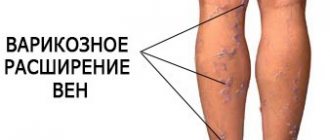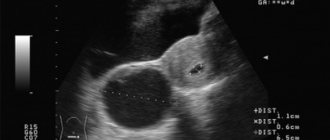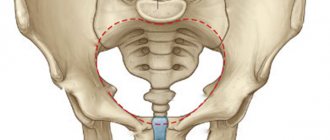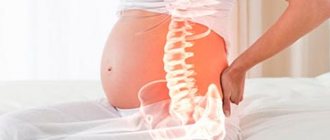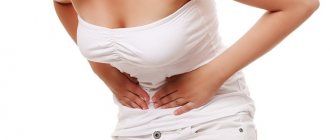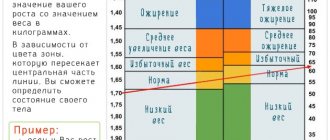Symptoms of intestinal colic during pregnancy
Some women may believe that such pain is a harbinger of a threatened miscarriage, which will have an extremely negative impact on their psychological state. To avoid unnecessary stress, you need to know the symptoms of intestinal cramps.
In the early stages they are joined by:
- increased gas formation;
- rumbling or grumbling;
- nausea and vomiting;
- bloating;
- problems with stool - constipation, diarrhea;
- loss of appetite;
- feeling of heaviness in the stomach.
All these signs are moderate in nature, but with poor nutrition and an inactive lifestyle they can intensify. If you feel unwell or have persistent concerns, be sure to consult your doctor.
At later stages, the symptoms of intestinal colic are more pronounced and bring more concern, as they are accompanied by dizziness or weakness.
Who is at risk?
This pathology is usually diagnosed in children in the first year of life. At this time, the nervous system is characterized by underdevelopment and rapid excitability. The stages of maturation of the brain and the entire central nervous system determine the characteristics of the age-related manifestations of seizures. Numerous studies of this problem have made it possible to identify the so-called risk group. Among the main factors predisposing to the occurrence of pathology, doctors identify:
- underdevelopment of the central nervous system;
- difficult childbirth;
- maternal use of drugs or alcohol during pregnancy;
- umbilical cord entanglement, asphyxia;
- disruption of labor.
The presence of one or more items from this list increases the likelihood that parents will have to deal with the problem of seizures in their baby.
Causes of abdominal cramps during pregnancy
However, colic can be a sign of intestinal viral infections and intestinal infection with internal parasites:
- With a viral infection, colic is accompanied by loose stools.
- Frequently recurring attacks of intestinal pain may indicate infection of the body with helminths - parasitic worms, salmonella. The doctor must order an examination and identify the cause.
- If, along with colic, vomiting and flatulence appear, or stool retention occurs, then these may be symptoms of acute intestinal obstruction. With this disease, it is necessary to urgently call an ambulance and take the patient to the hospital.
The body cannot cope with such an onslaught and fails. A woman suffers from diarrhea or constipation, mucus appears in the stool, intoxication of the body occurs - body temperature rises, weakness and fatigue appear. An imbalance of microorganisms also affects the child, because it is the mother’s microflora that is the basis for the formation of his intestinal microflora.
Main causes of violation
According to statistics, every fifth premature baby experiences seizures. In children born on time, the problem is diagnosed with a frequency of up to 10-14 cases per 1000 newborns. Among the main causes of the disorder, pediatricians name the following:
- metabolic disorders due to hypoglycemia or calcium deficiency;
- lack of oxygen flow to the brain;
- infectious damage to the central nervous system with subsequent development of ischemic encephalopathy;
- disruption of the adrenal glands due to their congenital pathology;
- hemolytic jaundice, which is a consequence of high bilirubin in the blood.
Treatment of intestinal colic during pregnancy
Mild, quickly passing intestinal pain does not require treatment, but be sure to inform the gynecologist about the discomfort. In other cases, when intestinal pain is a sign of some other disease, it is necessary to begin treatment under the guidance of a doctor. Even pharmaceuticals such as No-shpa or Espumisan, which can relieve spasms, are prescribed only by a specialist. He selects the dosage for the pregnant woman and sets the course of taking the medicine.
To treat colic and reduce gas formation, doctors can recommend the following drinks and foods, only taking into account the individual characteristics of the patient:
- Tea with mint or lemon balm
. During a normal pregnancy, doctors recommend drinking no more than 4 cups of tea per day, and the course of taking mint should not last more than 3 months. It should be used with caution, especially for women with a difficult pregnancy, since in case of an overdose, mint can provoke premature birth, since it contains estrogen. This tea is also contraindicated for women with low blood pressure. - Dill in any form
. It is recommended for postterm pregnancy or weak labor, since it enhances the contractile activity of smooth muscles, and the uterus is just a smooth muscle organ. Therefore, if in the early stages a woman is at risk of spontaneous abortion, then it is worth limiting the use of dill. In the second half of pregnancy, it is better to replace it with less harmless greens to replenish the body with vitamins and minerals. - Pharmaceutical chamomile
. It has antispasmodic, analgesic and carminative properties, that is, it is an ideal remedy for combating intestinal colic. However, this herb, although weak, is still an abortifacient, therefore, like peppermint and lemon balm, it increases the production of hormones - estrogens, which leads to uterine tension. Therefore, especially in the first trimester, use it only as prescribed by a specialist, observing all dosages. Chamomile is drunk in short courses, lasting no more than 7 days. Take up to 3 tablespoons of decoction no more than 3 times a day. - Motherwort
. According to doctors, it is one of the safest folk remedies when used correctly and without individual intolerance. It does not have a negative impact on the development of the child and the health of the mother. Unlike previous medicinal herbs, on the contrary, it relieves uterine tone. There are enough drugs based on it, but only a specialist can determine how to take it, the dosage and duration of the course.
Treatment
If seizures develop, you should find out the source of their occurrence as quickly as possible, undergo laboratory tests and undergo appropriate treatment. To make a diagnosis, you need to be examined by a phlebologist, cardiologist, gastroenterologist, neurologist, and gynecologist.
Therapy for muscle contractions is as follows:
- use of iron-containing drugs, venotonics;
- taking multivitamin and mineral complexes containing calcium, potassium, magnesium, vitamins B and D;
- use of elastic bandages for varicose veins;
- eliminating or reducing the manifestations of toxicosis;
- maintaining a balanced diet;
- rejection of bad habits;
- performing a set of special exercises;
- normalization of emotional state.
To eliminate cramps and swelling of the legs, you can use external remedies - gels, ointments and creams. These include:
- Troxerutin;
- Venitan;
- Fastum-gel;
- Heparin ointment.
They can only be used with the permission of a doctor. It is better to smear them 30-60 minutes before bedtime to prevent muscle spasms and reduce their soreness.
Some of the ointments are contraindicated in the third trimester.
In certain cases, Panangin, Asparkam, Magnerot, Kalcemin may be prescribed. You should not use them yourself, as they have contraindications and side effects.
Intestinal colic during pregnancy - prevention
Don't want to suffer from intestinal colic? Do you want to reduce the likelihood of their development? Then you must adhere to the following rules:
Fiber added to the diet:
- fresh fruits - apricots, apples, figs, pears, kiwi, black grapes;
- vegetables - carrots, spinach, pumpkin, cucumbers, beets;
- cereals - oatmeal, buckwheat;
- pumpkin and flax seeds, nuts.
Avoid products that increase gas formation:
- peas;
- beans;
- beans;
- black bread;
- carbonated drinks;
- baking from yeast bread;
- white cabbage.
The following recommendations are also taken into account:
- Eat less sweet, fatty and fried foods.
- They eat regularly, but in small portions.
- Preference is given to low-fat meat and fish, which are steamed or baked.
- Be sure to include fermented milk products in your diet if there is no individual intolerance, as they help normalize the intestinal microflora and relieve flatulence.
- For constipation, it is strictly contraindicated to use enemas and take laxatives on your own. Natural products with a laxative effect will help get rid of constipation - prunes, baked apples, boiled beets, kefir.
- Drink enough drinking water - about 1.5 liters per day.
- They lead an active lifestyle, avoid stress, anxiety, and strong worries.
- Have a full rest.
- Visit your gynecologist regularly.
Cramps in the early stages
Many women, being in the first trimester of pregnancy, complain of a painful sensation in the abdomen. There are situations when urgent hospitalization is necessary, and there are situations when you don’t have to rush to see a doctor. You should pay attention to how intense the pain is, where the source of the pain is, where it radiates.
Cramps during pregnancy can occur suddenly, be sharp, or be constant. Sometimes the spasms resemble contractions - they increase, decrease, or do not stop. Depending on the area where the pain comes from, it is possible to roughly determine the area of attention. At the top of the abdomen, the stomach or pancreas hurts; in the area of the navel, the intestinal tract signals.
Spasms in expectant mothers in the first trimester are divided into two types: safe and dangerous. The first type of pain is temporary, associated with the natural course of the process of bearing a child. The fetus grows, the organs become slightly deformed, and the hormonal levels change. The latter are associated with serious diseases and cause miscarriage or infection of the fetus.
Headache in the third trimester
Headaches, of course, are best avoided altogether. If you suddenly notice any prerequisites for them, then try to somehow neutralize them. You can take one paracetamol tablet; it is safer for pregnant women and is also an effective remedy.
But in general, all the preparation has already been completed, because you have already gone through the most difficult trials of the first and second trimester. Now you can just wait for the birth of your little miracle.
Source
As your body changes and develops to carry a baby, cramping is common. It may feel like someone is pulling the muscles on the sides of your abdomen and often begins during the first trimester. This is not considered a symptom that can be used to determine pregnancy, but it occurs very often. In most cases this is normal, but sometimes cramping can be a cause for concern.
Safe cramps
According to doctors, painful sensations are associated exclusively with the growth of the fetus inside and accompany women who have had painful menstrual cycles, attempts to get pregnant or miscarriages, or frozen pregnancies. But doctors do not consider these spasms dangerous for the woman and her unborn child.
Adhesive processes
The pain is associated with the appearance of adhesions in the uterus and ovaries. The formation of adhesions occurs due to connective tissue, which, due to its protective functions, connects to the place where the inflammatory process occurs or there was surgical intervention. It seems to stick to the source of inflammation and prevent the spread of infection throughout the body. When the inflammation subsides, the tissues grow together at the site of gluing and adhesions form.
Reasons causing the formation of adhesions:
- inflammatory diseases of the pelvic organs;
- after surgical procedures, for example, to remove the appendix;
- growth of the mucous membrane outside the uterus or endometriosis;
- blood in the abdominal cavity.
Treatment of adhesions during gestation is limited in the choice of medications. The expectant mother should refrain from eating foods that contribute to gas formation; food intake should be portioned - up to five times a day, in small volumes. Painkillers should be carefully selected by a doctor, and exercises should be performed.
Crick
A common injury that occurs in early pregnancy is when each muscle is stretched and a sprain occurs. This is due to the restructuring of the muscles of the uterus, other muscle groups located in the abdominal cavity, the vascular system, and the hormonal background of the body. Everything is being prepared for future births. The process is associated with discomfort, especially if before the position the woman did not engage in sports or other types of keeping her body in physical shape. For untrained muscles, the period of gestation is associated with overstrain and pain.
The body of the expectant mother is rebuilt to support the vital functions of the woman and the fetus. Essentially two organisms in one. The circulatory system creates an additional circle of blood vessels, the heart enlarges to allow more blood flow to pass through.
Hormonal changes
At the same time as the organs, the body’s hormonal system is rebuilt. During gestation, the content of the hormone responsible for maintaining pregnancy, progesterone, increases. A woman’s character changes, her gastronomic preferences change, even the position of her internal organs changes. The number of hysterics may appear or increase; this is a temporary phenomenon. When the baby is born and the feeding period has passed, the woman’s body will return to normal again and the hormonal levels will become the same as before the changes began.
Flatulence and constipation
The course of pregnancy does not go smoothly and without incidents. Many women suffer from increased gas formation and, accordingly, painful sensations. The reason for this may be a change in the position of internal organs and changes in hormonal levels. Increased production of progesterone, a hormone that relaxes the uterus, causes muscles in the intestines and stomach to relax. These organs are not so active in performing functions, which causes incomplete digestion of food, stagnation of waste in the rectum, and weak peristalsis of the organs. Stomach cramps during pregnancy are also related to hormones.
To avoid such unpleasant and painful sensations during pregnancy, you should exclude from the diet or consume in small quantities foods that contribute to increased gas formation. To help the intestines free from digested food debris, do light self-massage. Only the attending physician should prescribe medications.
Symptoms
The clinical picture of neonatal seizures is varied. As a rule, newborn seizures most often appear in the first days after birth; in some diseases, seizures may appear several weeks later.
There are several types of neonatal seizures.
- Small (minimal). Twitching of the eyelids is observed, leg movements resemble the movements of the legs of a swimmer or cyclist. The child smacks his lips and imitates sucking. The skin turns red, blue, or pale. The attack may be accompanied by apnea. These seizures are typical for premature babies.
- Clonic seizures. The limbs are involved in convulsions sequentially, asynchronously, consciousness is absent during and after generalized convulsions. With minimal severity, this type of seizure can be mistaken for a manifestation of the child’s normal motor activity. More often observed in full-term infants.
- Tonic convulsions. They occur both locally and generally, often with postural reactions. The limbs are involved in the process asynchronously. The child stretches out, throws back his head, rolls his eyes. Characteristic of premature newborns.
- Myoclonic spasms. Synchronous single or multiple twitches of the limbs, usually without loss of consciousness. After convulsions, tremors of the limbs may be observed. Generalized myoclonic seizures are often accompanied by changes in the encephalogram.
Convulsive episodes in newborns are usually cyclical and abortive in nature. The duration and type of seizures is determined by the underlying disease.
Important
! Any seizures during the newborn period are potentially life-threatening for the child.
Dangerous spasms
In addition to the natural pain that accompanies pregnancy and does not pose a threat to either the mother or the unborn child, unfortunately, there is another type of spasm. Involuntary contractions of the muscle tissue of organs often lead to pathologies of the fetus, threaten the health of the mother and lead to termination of pregnancy.
Placental abruption
The process of placental abruption is a diagnosis in pregnant women, leading to miscarriage if left untreated.
The pillow-like placenta is connective tissue. Through it there is a connection between the mother and the unborn child, he receives the necessary nutrients. Placental abruption is separation from the wall of the uterus. The fetus begins to starve, including oxygen.
Ectopic pregnancy
The egg is implanted not in the uterus, but outside it. An ectopic pregnancy is not viable and poses a threat to the health and life of a woman. The reason for this lies in the pathology of the fallopian tubes. Ectopic pregnancy can only be treated with surgery. Left unchanged, the situation leads to death for the woman.
Diseases by symptoms
Any symptom is a signal from the body that any organ, department or entire system is damaged. To find out why muscle cramps occur in breastfeeding women, you need to rule out certain diseases. Get timely diagnostics, find out why muscle cramps appeared and how to quickly and effectively improve the condition.
The list of diseases that cause muscle cramps in breastfeeding women:
- Purulent meningitis;
- Encephalitis;
- Tetanus;
- Decreased levels of microelements and vitamins;
- Decreased glucose levels;
- Decrease in hemoglobin level in the blood;
- Metabolic disorder;
- Impaired functioning of the adrenal glands.
Various diseases can cause involuntary muscle contractions. However, there are factors that influence the sphere around us: various stresses, depression, unexpected turns of fate - all this can also lead to seizures. But in any case, it is recommended to visit a specialist and find out the real reason.
Cramps in late pregnancy
Being in the third semester, the body is preparing directly for childbirth. To prepare, he conducts a kind of teaching for the woman. The former feel intense pain, the latter feel nothing.
Spasms in the lower abdomen indicate that the cervix is decreasing in length, and the cervix is opening, preparing to release the baby into the world. But not all pain prepares you for childbirth. Spasms are known to indicate difficulties in the body that threaten the fetus and the woman.
Harmless spasms
Poor nutrition can cause spasms in the organs involved in the process of digesting food. A heavy dinner, insufficiently fresh food, too fatty - can provoke pain in the abdominal area - dysbacteriosis, colitis.
Sprained ligaments also cause pain. The abdominal muscles are subject to constant tension. For such pain to go away, you need to lie down and rest.
To relieve the symptoms of intestinal obstruction, you should maintain a water balance, not exceeding the norm of water consumption, and eat more fresh fruits and vegetables. If you want to boil and bake vegetables, avoid fried and canned foods.
Dangerous spasms
Painful symptoms occur in the last stage of pregnancy when there is a threat of miscarriage. The pain is aching and does not subside, reminiscent of contractions. Discharge from the woman’s genitals is observed. In this case, seek medical help immediately!
Less common are pain in the lower back, when the uterus seems to turn to stone. These are false contractions and are dangerous at less than 37 weeks. When the interval between spasms decreases and the pain in the lower abdomen increases, there is a threat of miscarriage or premature expulsion of the fetus. Need emergency medical help.
Cramps in the lower abdomen during pregnancy are quite common. When spasms do not greatly disturb a woman, there should be no reason to panic. Mild spasms, as medical practice has shown, subside on their own without turning into more serious muscle contractions.
Another thing is if spasms cause pain, you need to urgently visit the women's office or call an ambulance team. Problems with abdominal cramps are very rare in pregnant women who are constantly under the supervision of a doctor.
Cramps during pregnancy often worry women who have previously had problems with bearing a fetus, miscarriages, and conceiving a child. One should take into account the theory that indicates the recurrence of negative phenomena during pregnancy. The antenatal clinic doctor constantly works with the pregnant woman, inspiring her to be calm and optimistic in order to facilitate the process of bearing a child.
How to alleviate the condition?
Rest and relax
If you are experiencing this problem, it is important to try to rest. Lie on the opposite side of the side where the pain occurs. Try sitting or elevating your legs to relieve cramping. Work on relaxing your body and mind, then the discomfort may disappear. Some people apply a hot compress to the painful area or take a warm bath to loosen the ligaments.
Sexual intercourse
It is believed that sex or orgasm during pregnancy can cause cramps or back pain. This causes the uterus and vagina to pulsate, which can help relax the muscles and ligaments. You should have sex slowly and gently, and consider ending the act with a back rub to relieve any tension. In some cases, sexual intercourse can cause nipple pain. This is especially common in the third trimester. However, there is no evidence that this can trigger labor.
Loading…
Source
Abdominal cramps during pregnancy
It is known that pregnancy and childbearing are accompanied by significant changes in a woman’s body, sometimes causing discomfort and inconvenience. This may lead to the development of abdominal cramps during pregnancy. They appear against the background of some physiological abnormalities or hormonal imbalances.
Spasms in the lower abdomen occur when smooth, striated muscles contract. In many cases there should be no cause for alarm, since this is a completely natural phenomenon.
Doctors say that uterine muscle spasms in early pregnancy do not require any intervention. The gradual increase in volume of the uterus leads to discomfort due to stretching of its muscles.
When hormonal changes occur, the elasticity of the ligaments that support the uterus increases. The placement of organs in the abdominal cavity changes.
Those pregnant women who had painful periods shortly before conception continue to experience abdominal discomfort for several months. A couple of months will pass and the inconvenience will stop.
The feeling of discomfort begins during sharp turns of the body, when quickly getting out of bed. Overstrain of the abdominal muscles provokes cramps. In such cases, the pregnant woman is advised not to strain and to rest for several hours.
In the second half of pregnancy, lingering pain in the abdomen may appear due to sprained ligaments and pressure from the growing fetus on adjacent organs.
Wearing a special bandage helps overcome discomfort in such cases. It is worn in a supine position and placed in the lower abdomen to reduce the load on the vertical muscles when standing up. Wearing a properly selected bandage does not cause any inconvenience.
Intestinal spasm during pregnancy
The origin of intestinal spasm during pregnancy is explained by the movement of a fertilized egg into the uterine cavity. Such symptoms are mild a few days after conception.
Intestinal spasms with pain may be a consequence of hormonal changes in the body of a pregnant woman. In later stages of pregnancy, intestinal spasms are caused by the pressure of the gradually increasing fetus on neighboring organs.
With frequent repetitions of intestinal spasms with pronounced pain, it is recommended to contact a medical facility. In some cases, a warm heating pad provides some relief, but you should not get carried away with this method if you have a very large belly and acute pain.
During the entire period of pregnancy, you need to monitor the correct diet. For a pregnant woman with severe intestinal cramps, the doctor prescribes the children's drug Espumisan or No-shpu.
Stomach cramps during pregnancy
Stomach cramps during pregnancy occur due to various reasons. Here are some of them:
- Growth of the uterus. As the uterus increases in volume, it creates pressure on the abdominal organs, causing pain in them.
- An increase in the amount of the hormone progesterone in the blood. The hormone reduces the tone of the small and large intestines, thereby contributing to nausea, flatulence, and heartburn.
- Gluttony. Large amounts of food eaten contribute to increased tension in the abdominal muscles due to constipation and insufficient digestion.
- Bacterial, viral infections. Symptoms of the disease provoke spasmodic pain in the stomach.
- Gastritis, acute or chronic. The inflamed gastric mucosa causes disruption of the entire gastrointestinal tract. The acute form of gastritis is expressed by fever, diarrhea (diarrhea) and vomiting. In the chronic form of the disease, the pregnant woman has no appetite, nausea, and heaviness in the stomach.
Back pain in the third trimester
In the third trimester, you should absolutely not lift heavy things; you need to be very careful not to injure your back. And if she gets sick, then you can follow some simple recommendations.
Massage perfectly relieves back pain. You can trust a professional, or you can do it yourself. Lying or sitting with both hands, massage the sacral area along the spine. Sometimes a warm shower helps a lot for pregnant women to relieve muscle tension.
And in order to completely prevent back pain, you need to monitor your posture, don’t slouch, keep your back straight and don’t lean back. It is also necessary to perform special gymnastics for pregnant women to strengthen the back muscles. All recommendations are simple and will help you avoid pain, which will make pregnancy a wonderful period in your life, and not a difficult ordeal that you would like to get through as quickly as possible.
Spasms and convulsions of the muscles of the lower extremities
Leg muscle cramps with spasms occur when the metabolism of calcium and phosphorus is disturbed. The same symptoms occur when the enlarged uterus compresses adjacent large nerves.
Other reasons: physical overload of the body, prolonged standing. If cramps and spasms begin to recur frequently, the doctor prescribes blood tests followed by correction of phosphorus-calcium metabolism.
When calcium deficiency occurs, the pregnant woman is given medications containing calcium.
Other recommendations for a pregnant woman with cramps in the leg muscles:
- Do not lift or move heavy objects.
- Reduce the amount of time you spend in a standing position.
- Limit physical activity as much as possible, avoiding overwork of the body.
- Exclude buckwheat, fish, oatmeal, and legumes from the daily diet.
Preventing seizures
To prevent the development of seizures during pregnancy, you should follow some recommendations:
- Wear comfortable, stable shoes without heels and high wedges. If the foot is accustomed to lifting, then the heel should be wide and not exceed 5 cm so that the legs are not overstrained.
- Diversify your diet and eat more dairy products, meat, cereals, vegetables, and fruits. Follow your diet.
- Take warm foot baths with sea salt before bed . This method is only permissible in the absence of varicose veins.
- For varicose veins, wear compression underwear - stockings, tights.
- Walk more, but don’t let your legs start to hurt.
- Sleep on your left side, using a special pillow to maintain a comfortable position.
- Stretch your legs while doing exercises. Rise 10-15 times on tiptoes; roll from toes to heels; When lying down, try to reach towards the edge of the bed with your entire foot (not your toes). You can use special massage mats.
- Do a light calf massage before bed.
- Take vitamin and mineral complexes.
- Do yoga for pregnant women, swimming.
It is possible to prevent seizures. The main thing is to listen to your body, monitor your health and follow the advice of doctors.
Advertising:
Muscle spasms in the lower abdomen during pregnancy
Cramps in the lower abdomen during pregnancy often disturb a woman. Several reasons contribute to the appearance of such symptoms. Basically, this is a pronounced sprain of the ligaments that support the growing uterus throughout pregnancy.
Spasms intensify when a woman in labor sneezes, coughs, stands up or sits down, or turns over while lying from one side to the other. The same spasms occur with functional pathology of the digestive tract of a pregnant woman.
Spasms with intestinal colic are expressed by sharp pain in the lower abdomen due to the accumulation of gases in the intestines. Changing your diet will help improve the condition of a pregnant woman. You should include foods containing fiber: nuts, cereals, bran bread, vegetables, fruits.
At the end of pregnancy, cramps in the lower abdomen are caused by the movement of the fetus. For swelling of the lower extremities, limit fluid intake, which will help get rid of discomfort.
When do the first cramps in the lower abdomen appear during pregnancy? They can occur a week after conception. This is the period when a fertilized egg moves to the walls of the uterus.
This physiological phenomenon occurs during the process of hormonal changes in the body. As the uterus increases in size, it causes increased synthesis of the hormone progesterone. Thus, the body prepares to bear the unborn child.
In this case, the woman in labor feels a dull pain in the lower abdomen, and occasionally there is minor bleeding. Sometimes cramps in the lower abdomen cause the urge to urinate. The explanation here is that the growing fetus puts pressure on the bladder, causing some discomfort.
After a certain period of time, spasmodic attacks stop if the pregnant woman regularly rests and takes care of her health. However, in cases where spasms in the lower abdomen do not stop, intensify with radiation to the lumbar region, and are accompanied by bloody discharge, the woman should come to the antenatal clinic as quickly as possible.
Muscle spasm of the uterus during pregnancy
Uterine spasms during pregnancy cannot cause miscarriage or premature birth. However, you should consult a doctor to clarify the cause of this discomfort and carry out treatment for medical reasons.
The first uterine spasms are also observed in the second trimester. But closer to childbirth, uterine spasms with abdominal pain occur more often. Doctors say that uterine spasms are mainly associated with its increase in volume.
Over time, the fetus grows in the womb along with the growth of the uterus; the active child, with its jerks, resembles spasms. This should not be feared due to the absence of any threats to gestation.
Spasmodic pain during pregnancy
Pain and cramps during pregnancy do not always lead to miscarriage, although it is imperative to find out the cause of the discomfort. An accurate diagnosis should be made during a thorough examination in a medical institution for mother and child.
Such pain is possible due to intestinal dysfunction, flatulence, and an increase in the size of the uterus. Or they manifest themselves in the form of false contractions. Constant repetition of pain, accompanied by discharge and bleeding, is the reason for immediate hospitalization of the pregnant woman.
In the first trimester of pregnancy, if the gynecologist notes non-dangerous cramps, they can continue without consequences until the middle of pregnancy.
Cramps in early pregnancy
Cramps during early pregnancy are very similar to the pain that occurs during menstrual bleeding. This combination of circumstances often leads a woman into error: she thinks that her critical days are approaching.
Such contractions occur against the background of hormonal changes in the body associated with conception. They may occasionally be accompanied by bleeding. A woman should take a pregnancy test when she experiences cramping during her missed period.
First aid
If a woman is bothered by cramps during pregnancy, then it is advisable to eliminate the excruciating pain as soon as possible, rather than stoically endure it. There are many methods for combating muscle spasms that are simple and highly effective. It is important to act clearly and quickly during a leg cramp, be patient and not take rash actions.
If a cramp occurs, do not panic or be frightened: you should breathe deeply and calmly and, overcoming the pain, do the following:
- Massage the tense muscle. This will normalize blood circulation, warm up the leg tissues and eliminate the cause of the cramp.
- Extend your leg and pull your foot towards you. It is important to try to stretch your toes along with your foot. Then relax and repeat everything again until the cramp subsides.
- Apply a heating pad or bottle filled with hot water and wrapped in a towel to your leg. Heat allows you to warm up and relax your muscles and relieve spasms.
- If the cramp does not go away and is very intense, then you should take a Paracetamol tablet and take a warm bath. In the morning, you should immediately consult a doctor.
- Stand with your bare foot on the cold floor and try to stand like that for a short time.
- Place the limb under running hot water.
- Pinching and pricking the muscle does not violate the integrity of the skin.
Tip: If a cramp has frozen your leg, you can use glycerin. A few drops of this substance applied to the skin can eliminate spasms in a short time. If you don’t have glycerin at hand, then toilet soap containing this substance can successfully replace it. By rubbing a limb with soap, you can achieve quick results.
How to treat spasms during pregnancy
Doctors at the antenatal clinic recommend that pregnant women always have Papaverine and No-shpa tablets with them. These antispasmodic drugs easily relieve painful spasms of the smooth muscles of internal organs (uterus, stomach, intestines, kidneys) during pregnancy.
By relieving spasms of smooth muscles, these drugs do not affect the central nervous system.
Conclusions . Abdominal cramps during pregnancy are not always a reason to panic, but regular visits to antenatal clinics will help a pregnant woman bear and give birth to a healthy child without any consequences.
Causes
By the time of birth, the child’s nervous system is in an immature state. The process of formation of neurons and neural connections is completed. The child’s nervous system is in a state of increased convulsive readiness, including due to an unstable balance in the “excitation-inhibition” system.
The causes of seizures in the neonatal period are varied:
- Traumatic brain injury (hypoxic-ischemic perinatal encephalopathy).
- Infections (meningitis, meningoencephalitis).
- Metabolic disorders (hypocalcemia, hypoglycemia).
- Hereditary diseases (benign familial epilepsy).
- Tumors.
- Anomalies in the development of the brain and nervous system.
- Withdrawal syndrome (in children of mothers with alcohol or drug addiction).
